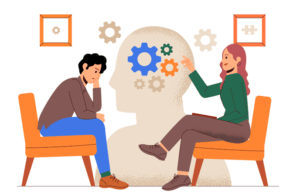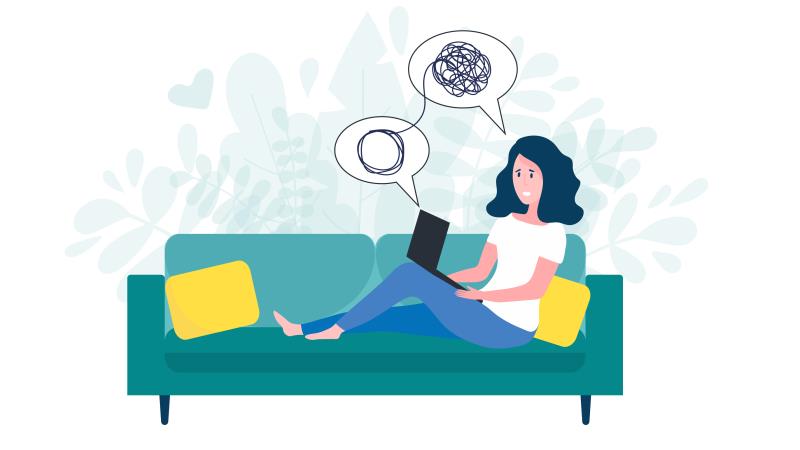Stimulus Control Therapy (SCT) is a type of behavioral therapy that aims to help people change their behavior by modifying the environmental factors that influence it. This therapy is based on the principle that behavior is influenced by environmental stimuli, and that changing the stimuli can lead to changes in behavior. In this article, we will discuss in detail what SCT is, how it works, and how it can be applied to different behavioral problems.
Contents
What is Stimulus Control Therapy?

Stimulus Control Therapy (SCT) is a type of behavioral therapy that involves modifying the environmental factors that influence a person’s behavior. SCT is based on the principle that behavior is shaped by environmental factors, such as cues, stimuli, and context. These environmental factors can trigger a particular behavior, or they can reinforce it. For example, a person may have developed a habit of eating when they watch television because they associate the activity with relaxing in front of the TV. In this case, the environment (the television) is acting as a stimulus that triggers the behavior (eating).
SCT aims to help people gain control over their behavior by modifying the environmental factors that influence it. The therapy involves identifying the stimuli or cues that trigger the undesired behavior, and then modifying or eliminating them. SCT can be used to treat a variety of behavioral problems, including addiction, eating disorders, and sleep disorders.
How Does Stimulus Control Therapy Work?
SCT works by modifying the environmental factors that influence a person’s behavior. The therapy involves a series of steps that are designed to help the person gain control over their behavior. These steps may include:
- Identifying the problem behavior: The first step in SCT is to identify the problem behavior. This involves identifying the behavior that the person wants to change and understanding the environmental factors that trigger or reinforce the behavior.
- Identifying the stimuli or cues that trigger the behavior: The next step is to identify the stimuli or cues that trigger the behavior. This may involve keeping a record of when the behavior occurs, and what environmental factors are present at the time.
- Modifying or eliminating the stimuli or cues: Once the stimuli or cues that trigger the behavior have been identified, the next step is to modify or eliminate them. This may involve changing the environment, such as removing or rearranging objects, or changing routines or habits.
- Reinforcing desired behaviors: The final step in SCT is to reinforce the desired behavior. This may involve providing rewards or incentives for engaging in the desired behavior or using positive reinforcement techniques to encourage the person to continue engaging in the desired behavior.
Techniques of Stimulus Control Therapy

Here are some of the techniques that are commonly used in SCT:
- Stimulus discrimination: This technique involves helping the person to discriminate between the desired and undesired stimuli or cues. For example, a person who snacks when they watch TV may be encouraged to only snack on healthy foods while watching TV.
- Behavioral chain analysis: This technique involves identifying the specific steps or behaviors that lead up to the undesired behavior. For example, a person who overeats may be encouraged to identify the specific triggers that lead up to the overeating, such as stress or boredom.
- Gradual exposure: This technique involves gradually exposing the person to the stimuli or cues that trigger the undesired behavior while providing coping strategies to manage the behavior. For example, a person with a fear of heights may be gradually exposed to increasing heights while using relaxation techniques to manage their anxiety.
- Response prevention: This technique involves preventing the person from engaging in the undesired behavior by removing the stimuli or cues that trigger it. For example, a person who compulsively checks their phone may be encouraged to turn off notifications or leave their phone in another room.
- Negative reinforcement: This technique involves removing or reducing negative stimuli or consequences that may be reinforcing the undesired behavior. For example, a person who engages in self-harm may be encouraged to seek help to reduce the underlying emotional distress that is reinforcing the behavior.
Overall, these techniques can be used in combination or individually depending on the specific needs and circumstances of each person.
Applications of Stimulus Control Therapy

SCT can be applied to a wide range of behavioral problems, including addiction, eating disorders, and sleep disorders. Here are some examples of how SCT can be applied in different contexts:
Addiction
SCT can be used to treat addiction by modifying the environmental factors that trigger drug use or other addictive behaviors. For example, a person who smokes when they are stressed may be encouraged to find alternative ways to manage stress, such as exercise or meditation. Additionally, the person may be encouraged to avoid situations or environments that trigger drug use, such as bars or clubs.
Eating Disorders
SCT can be used to treat eating disorders by modifying the environmental factors that trigger binge eating or other disordered eating behaviors. For example, a person who binges on junk food when they are alone may be encouraged to eat meals with others or to find alternative activities to engage in when they are feeling bored or lonely.
Sleep Disorders
SCT can be used to treat sleep disorders by modifying the environmental factors that disrupt sleep. For example, a person who has difficulty falling asleep may be encouraged to create a sleep-conducive environment by keeping the bedroom dark and quiet and avoiding stimulating activities before bedtime.
Phobias and Anxiety Disorders
SCT can be used to treat phobias and anxiety disorders by modifying the environmental factors that trigger the person’s anxiety. For example, a person with a fear of flying may be encouraged to gradually expose themselves to the anxiety-provoking situation, while learning coping strategies to manage their anxiety.
Procrastination
SCT can be used to treat procrastination by modifying the environmental factors that contribute to the behavior. For example, a person who procrastinates when they are faced with a large task may be encouraged to break the task down into smaller, more manageable tasks, and to eliminate distractions in their environment.
Attention deficit hyperactivity disorder (ADHD)
SCT can be used to treat ADHD by modifying the environmental factors that contribute to distractibility and impulsivity. For example, a child with ADHD may benefit from a structured routine and a calm, organized environment that reduces distractions and provides clear cues for desired behaviors.
Obsessive-compulsive disorder (OCD)
SCT can be used to treat OCD by modifying the environmental factors that trigger the person’s compulsive behaviors. For example, a person who compulsively checks locks may be encouraged to gradually reduce the frequency of the behavior, while learning coping strategies to manage their anxiety.
Pros and Cons of Stimulus Control Therapy

Like any form of therapy, Stimulus Control Therapy (SCT) has its pros and cons. Here are some of the pros and cons of SCT:
Pros
- SCT is evidence-based: SCT is a well-established form of therapy that has been studied extensively and shown to be effective for a range of behavioral problems.
- SCT is non-invasive: SCT is a non-invasive form of therapy that does not involve medication or surgery. This makes it a safe and accessible option for many people.
- SCT is flexible: SCT can be adapted to the specific needs and circumstances of each individual. This makes it a versatile therapy that can be customized to address a wide range of behavioral problems.
- SCT is empowering: SCT puts the focus on the individual’s ability to change their behavior, rather than on external factors or circumstances. This can help to empower the person and give them a sense of control over their life.
- SCT can have long-lasting effects: By modifying environmental factors that influence behavior, SCT can lead to lasting changes in the person’s behavior and quality of life.
Cons
- SCT can be challenging: Modifying environmental factors that trigger behavior can be challenging, especially if the person is dealing with deep-seated habits or addictions.
- SCT may not be effective for everyone: While SCT is effective for many people, it may not work for everyone. Some people may require additional forms of therapy or a different approach altogether.
- SCT requires commitment: To be effective, SCT requires a commitment to change and a willingness to work on modifying behavior over time.
- SCT may require ongoing support: Depending on the severity of the behavioral problem, SCT may require ongoing support from a therapist or support group to maintain progress and prevent relapse.
- SCT may not address underlying issues: While SCT can be effective in modifying behavior, it may not address underlying psychological or emotional issues that contribute to the behavior. In some cases, additional forms of therapy may be necessary to address these underlying issues.
Conclusion
Stimulus Control Therapy is a well-established form of therapy that is effective for a range of behavioral problems. While SCT has many benefits, it may not be effective for everyone and may require a commitment to change and ongoing support to maintain progress. As with any form of therapy, it’s important to work with a trained therapist who can help you determine whether SCT is the right approach for your needs and circumstances.
For more information, please contact MantraCare. Sleep is an essential part of our daily routine and it plays a significant role in maintaining a healthy body and mind. If you have any queries regarding Online Insomnia Counseling experienced therapists at MantraCare can help: Book a trial therapy session


